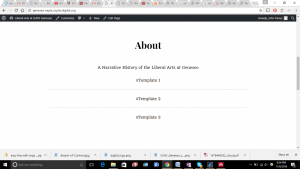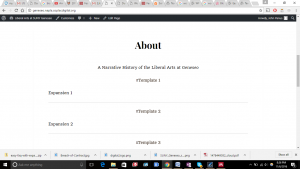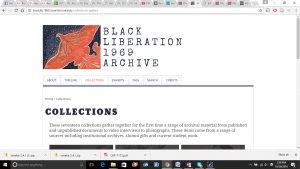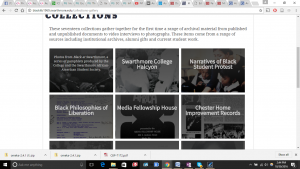“There isn’t anyone you wouldn’t learn to love once you knew their story” –Andrew Stanton
As I’ve grown through my experience with higher education, I’ve become a person deeply invested in the ways that the written and spoken word is used to communicate with other people. As an English major–or to be more specific, as a person who has learned and studied storytelling through words on a page, rather than through music, painting, architecture, dance, or otherwise–I’m trained to think of stories as a sequence of sounds, a combination of stressed and unstressed syllables, syntactical contraptions, connotations and denotations. This course immediately interested me with its opportunity to “capture […] identities, cultures, histories, and environments” surrounding public higher education and the liberal arts. I was drawn to the prospect of telling stories–and terrified when I found out that I would have to create a website in order to showcase these stories. This course definitely took me out of my comfort zone. Leaps and bounds out of my comfort zone. As it happens, my cross country coach often tells the team that this space–leaps and bounds out of your comfort zone–“is where the magic happens.” And I’d have to agree.
Because of this course, I was confronted with a stark reality: on the world wide web, a sequence of sounds isn’t always the best way to tell a story. Because of this course, I started to think about things like “mise-en-page” and visual rhetoric as ways of telling stories; I also began thinking about minuscule details like font size and how this can affect a viewers experience of the story. How are readers used to viewing a page? What happens when you present a story in a manner that works against the readers expectations, for instance, what happens if information moves from right to left, bottom to top? It’s not that any of this necessarily enhances storytelling in any way, but rather that considering these changes allows one to contemplate a realm of possible experiences that you haven’t previously encountered. As this semester comes to a close and I reflect on all the ways a screen can be manipulated to change the way a person experiences the information, the ways that information can be both transparently and rhetorically presented on a screen, I’m reminded of the “sympathetic research imagination.” And now, I feel like I’ve come full circle as a storyteller in this course. Like any story, my work was for me, and for someone else. And after taking this course, I would argue that contemplating the way information can be organized on a page is an exercise in empathy just as much as reading a novel–the experience is simply articulated differently.
With this said, I think I’m most grateful for the opportunity to write playfully in this course. I’m grateful for the chance to play with my form, to quote Guardians of the Galaxy, Star Trek, and Pixar animators; to (pathetically) attempt to write like Michael Chabon, utilize epigrams, make silly, half-baked allusions to philosophical ideas I clearly don’t understand; to share things that excite me as if they excite others as well and to express these ideas in ways that traditional college courses don’t allow; to write long sentences with a dozen semicolons; to tell stories. My posts in this course (including this one) were always long because I loved writing them.
I’ll sign off from this course with a quote from David Zuckerman, mostly because I love his essay and want to share it with people, but also because its (almost) relevant. In an essay that is at once a love letter to the show and an elegy for its demise, David Zuckerman, executive producer and showrunner of my favorite TV show, Wilfred has this to say about exploring the experience of a man who sees his neighbor’s dog as a man in a fuzzy suit: “how terrifying and lonely it would be to live with that kind of secret. Such a man might be so afraid of what people would think if they learned the truth that he’d likely become even more isolated and unable to make meaningful connections with others. His only choice would be to pretend he’s normal, to hide his authentic self from the world.” That part isn’t relevant, but its beautiful. Here’s the relevant part: “sadly that’s another thing good shows and good dogs have in common: Neither lives as long as you’d like them to. Fortunately, both leave you with wonderful memories to cherish. I am grateful I had Wilfred in my life.”
This course has been a wild ride. This semester has been the most physically, mentally, and emotionally exhausting semester of my undergraduate career, and although I wish I could continue with the work of this course, I’m in need of a break. I’ll return hungry for the digital humanities and its potential for storytelling. Until then, I beat on, boat against the current, excited to return to DH to tell stories for me, and for someone else.

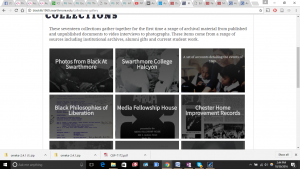 –this was the guiding website.
–this was the guiding website.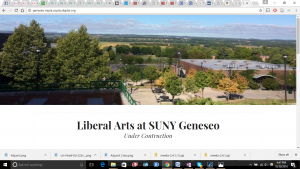
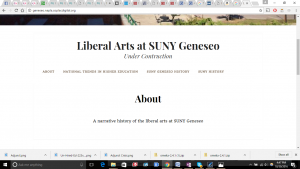 –here’s where we started.
–here’s where we started.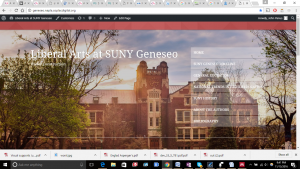 –after testing some themes, this is what I got. I think the picture of Geneseo works extraordinarily with this theme, but we’ll have to do some editing with the font, colors, and menu.
–after testing some themes, this is what I got. I think the picture of Geneseo works extraordinarily with this theme, but we’ll have to do some editing with the font, colors, and menu.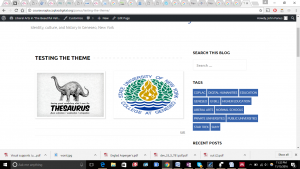 –here’s a template of how I thought the theme would work.
–here’s a template of how I thought the theme would work. –that didn’t happen. When you add pictures to the home page, the site works differently. Obvious issues.
–that didn’t happen. When you add pictures to the home page, the site works differently. Obvious issues.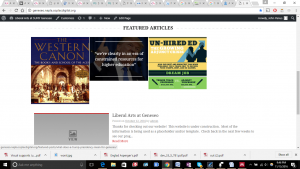 –the hover aspect is nice. But this theme does it automatically–whereas I spent hours working with plugins to get this affect on the other theme.
–the hover aspect is nice. But this theme does it automatically–whereas I spent hours working with plugins to get this affect on the other theme.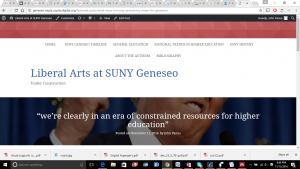 –and when you click on the site, it takes you to this page (which will later be filled with information). I had to do some editing to get here, and didn’t take all the picture to prove it.
–and when you click on the site, it takes you to this page (which will later be filled with information). I had to do some editing to get here, and didn’t take all the picture to prove it.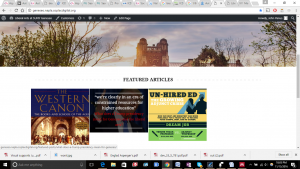 –this small change from the original hover effect is the change I’m most impressed with. I had to do some SERIOUS coding:
–this small change from the original hover effect is the change I’m most impressed with. I had to do some SERIOUS coding: –changing font size and color. Putting in a line break so there’s a primary title (the quote) and a secondary title (the question).
–changing font size and color. Putting in a line break so there’s a primary title (the quote) and a secondary title (the question).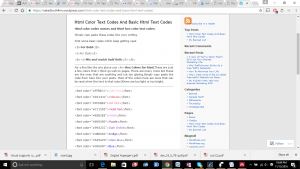 –and I seriously appreciate the people who paved the way before me.
–and I seriously appreciate the people who paved the way before me.